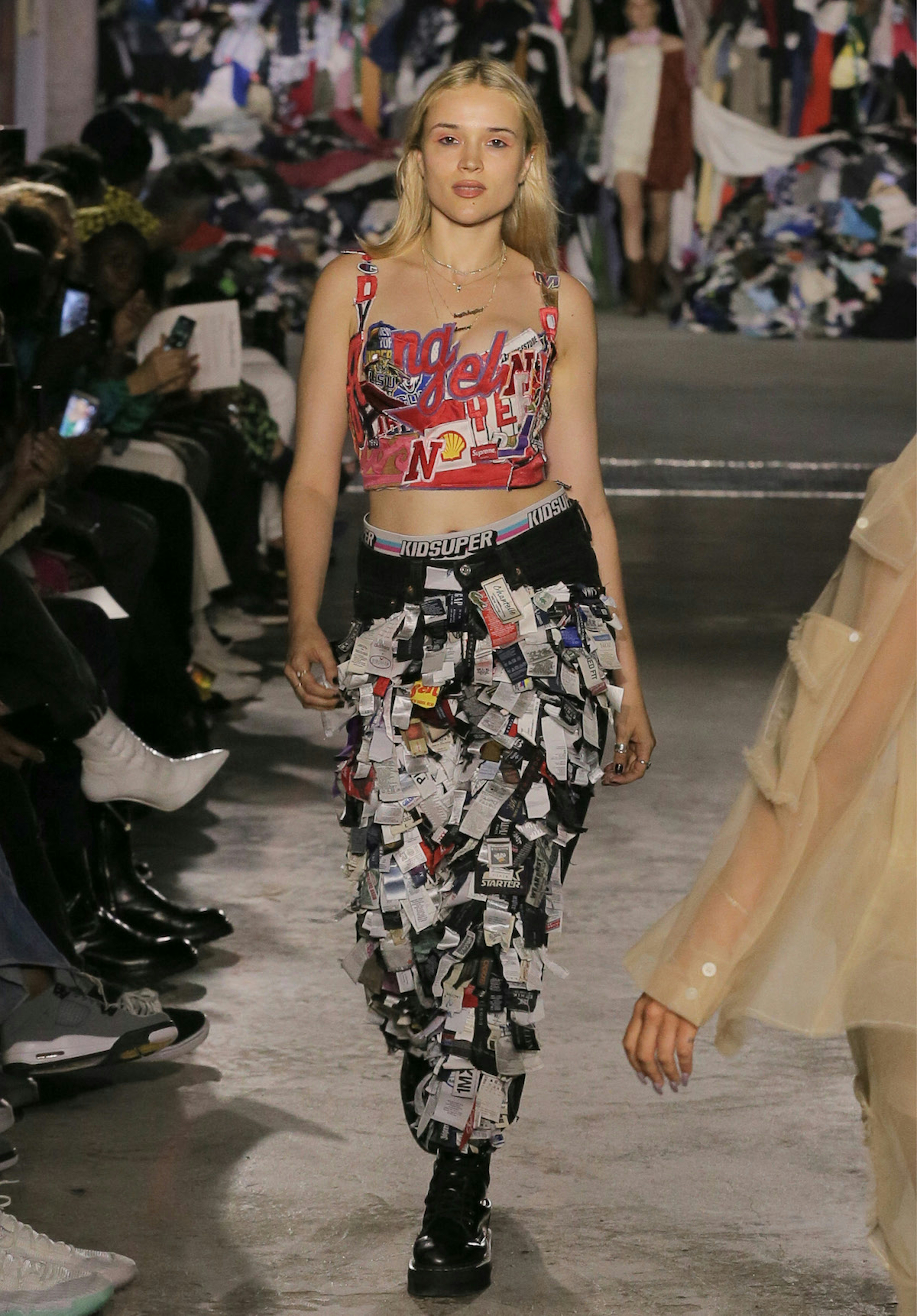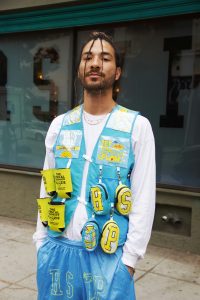In our modern world, it’s crucial that we consider the environmental impact of our everyday choices, including what we wear. “How Can I Reduce My Fashion Carbon Footprint?” offers practical and empowering tips for us to make more eco-friendly decisions with our wardrobe. From choosing sustainable brands to embracing second-hand shopping and practicing mindful consumption, this guide helps us take meaningful steps toward a greener lifestyle. Together, we can make a positive difference for our planet, one outfit at a time. How can we reduce our fashion carbon footprint? This question is more relevant today than ever. In a world where sustainability is at the forefront of our minds, our fashion choices play a significant role in our overall environmental impact. Fast fashion, with its rapid production and disposal cycles, has brought a heavy toll on our planet. But don’t despair; there are many practical steps we can take to be more mindful consumers and make significant strides toward reducing our fashion carbon footprint. Let’s dive deeper into some strategies and tips on how we can make this transition easier and more effective.

Understanding Fashion’s Carbon Footprint
Our journey starts with understanding what a fashion carbon footprint actually is. Simply put, it refers to the total greenhouse gas emissions generated by the production, transportation, and disposal of our clothing.
The Environmental Impact of Fast Fashion
We may often hear about the negative impacts of fast fashion, but let’s break down what that actually means. Fast fashion brands focus on rapidly producing high volumes of clothing, often at lower costs. This model leads to several environmental issues:
| Environmental Issue | Description |
|---|---|
| High Water Usage | Textile production, particularly cotton, requires massive amounts of water. |
| Chemical Pollution | Dyes and finishes release harmful chemicals into air and waterways. |
| Waste Generation | Fast fashion contributes significantly to landfill waste. |
| High Energy Consumption | Factories and transport logistics burn fossil fuels, generating CO2. |
Why Reducing Our Fashion Carbon Footprint Matters
Reducing our fashion carbon footprint isn’t just a personal choice; it’s a global necessity. By making more sustainable fashion choices, we help preserve our environment, reduce waste, and mitigate climate change. Plus, we set an example for others to follow, creating a ripple effect of positive change.
Analyzing Our Current Fashion Habits
Before we can take meaningful action, it’s essential to acknowledge and understand our current fashion habits.
Assessing Our Wardrobe
A simple way to start is by taking inventory of our wardrobe. Ask yourselves:
- How many items do we own?
- How often do we wear each item?
- How many items were purchased on impulse?
By answering these questions, we can identify patterns in our shopping habits and recognize areas for improvement.
The Buy-and-Throw Cycle
Let’s consider how often we buy new clothing items and how quickly we dispose of them. Fast fashion encourages us to buy frequently and discard quickly, leading to:
- Increased waste: Clothes that are barely worn end up in landfills.
- Higher demand: More production cycles ramp up resource consumption and energy use.
Breaking this cycle requires mindful purchasing and extending the life of the items we already own.
Making Sustainable Fashion Choices
Now that we understand the impact of our current habits, let’s explore specific actions we can take to make more sustainable fashion choices.
Choosing Quality Over Quantity
Investing in higher-quality pieces that last longer is one of the most effective strategies for reducing our carbon footprint. While these items may come with a higher price tag, they often:
- Offer better durability.
- Use sustainable materials.
- Are produced under fair labor conditions.
| Quality Purchase Tips | Benefits |
|---|---|
| Look for well-constructed clothing | Long-lasting wear, reduced need for replacement |
| Check brands for sustainability efforts | Ethical practices and eco-friendly materials |
| Opt for timeless styles | Versatility and prolonged use |
Prioritizing Natural and Recycled Materials
When shopping, we should prioritize clothing made from natural, organic, or recycled materials. These materials generally have a lower environmental impact than synthetic counterparts.
| Material Type | Description |
|---|---|
| Organic Cotton | Grown without harmful pesticides, reducing water and soil pollution. |
| Recycled Fabrics | Uses existing materials, minimizing waste. |
| Bamboo | Grows rapidly without the need for chemicals. |
| Hemp | Requires minimal water and helps replenish soil nutrients. |
Supporting Ethical and Sustainable Brands
Many brands are now emphasizing ethical production and sustainability. By supporting these companies, we encourage the industry to adopt more environmentally friendly practices.
| Brand Criteria | Indicators |
|---|---|
| Fair labor practices | Fair wages, safe working conditions |
| Eco-friendly materials | Organic, recycled, or sustainably sourced fabrics |
| Transparent supply chain | Clear information on sourcing and production |
Sustainable Fashion Certifications
Several certifications can help us identify genuinely sustainable products. Look for labels such as:
- GOTS (Global Organic Textile Standard): Ensures organic status of textiles.
- Fair Trade Certified: Guarantees fair wages and safe labor conditions.
- OEKO-TEX Standard 100: Certifies that products are free from harmful chemicals.
Extending the Life of Our Clothing
One of the simplest ways to reduce our fashion carbon footprint is to make our clothing last longer.
Proper Care and Maintenance
By taking good care of our clothes, we can preserve their quality and extend their lifespan.
Washing
- Use cold water to reduce energy consumption.
- Choose eco-friendly detergents that are less harmful to the environment.
- Wash clothes only when necessary to reduce wear and tear.
Drying
- Air dry clothes whenever possible. This method is gentler on fabrics and saves energy.
- If using a dryer, clean the lint filter regularly for efficiency.
Storage
- Store clothes in a cool, dry place to prevent mold and mildew.
- Use padded hangers or fold items neatly to avoid stretching and creasing.
Repairing and Upcycling
Rather than discarding damaged items, consider repairing or upcycling them.
- Basic repairs: Mend tears, replace buttons, or sew loose hems.
- Upcycling: Transform old items into new pieces, such as turning jeans into shorts.
Clothes Swaps and Second-Hand Shopping
Participating in clothes swaps and shopping second-hand are excellent ways to refresh our wardrobes sustainably.
Clothes Swaps
- We can organize swaps with friends or join community events to exchange clothes. This way, we give our unwanted items a new home and find “new” pieces for ourselves without contributing to new production.
Second-Hand Shopping
- Thrift stores, consignment shops, and online platforms offer unique, affordable items. Buying second-hand reduces demand for new clothing, minimizing our environmental impact.

Making Smart Fashion Purchases
When it is time to buy something new, we can shop smart by asking ourselves a few questions and being mindful of our choices.
The 30-Wear Test
Before making a purchase, consider whether we will realistically wear the item at least 30 times. This rule helps us focus on versatile, long-lasting pieces that truly add value to our wardrobe.
Evaluating Cost Per Wear
Instead of looking only at the price tag, calculate the cost per wear. A high-quality item may have a higher initial cost but can be more economical in the long run due to its durability.
| Item | Initial Cost | Estimated Wears | Cost Per Wear |
|---|---|---|---|
| High-quality coat | $200 | 100 | $2.00 |
| Trendy fast fashion jacket | $50 | 10 | $5.00 |
Considering the Lifecycle of the Garment
Think about the entire lifecycle of the garment, from production to disposal. Opt for brands that offer recycling programs or have take-back initiatives to ensure that clothing is repurposed or recycled at the end of its life.
Reducing Fashion Waste
Reducing fashion waste is a critical aspect of lowering our carbon footprint. Let’s explore some strategies to minimize waste in our fashion habits.
The Importance of Minimalism
Adopting a minimalist approach to fashion can significantly reduce waste. By curating a capsule wardrobe with a few versatile, well-loved items, we can:
- Simplify our style choices.
- Lower the demand for new clothing.
- Minimize clutter and stress.
Donating Responsibly
When letting go of clothes, make sure they go to a good place. Donate items that are still in good condition to charitable organizations or textile recycling programs.
Recycling and Composting
- Recycling: Some brands and community programs accept old clothing for recycling into new materials.
- Composting: Natural fibers like cotton and wool can be composted if they are not treated with harmful chemicals.
Staying Informed and Advocating for Change
Being informed and advocating for change can amplify our impact and inspire others to join the movement toward sustainable fashion.
Continuing Our Education
The fashion industry is constantly evolving, with new innovations and shifts towards sustainability. Stay updated by:
- Reading articles from credible sources.
- Following sustainability-focused social media accounts.
- Participating in workshops and webinars.
Advocating for Policy Change
We can use our voices to advocate for policies that support sustainable fashion. This might include:
- Supporting legislation aimed at reducing textile waste and pollution.
- Encouraging companies to adopt circular economy principles.
- Promoting transparency and ethical practices in the fashion industry.
Sharing Knowledge
Share what we learn with friends, family, and social networks. By spreading awareness, we help build a community of informed consumers who can advocate for better practices.
Innovative Approaches to Sustainable Fashion
In addition to the practical steps we’ve discussed, some innovative approaches are making sustainable fashion more accessible and appealing.
Rental Services
Fashion rental services allow us to enjoy the thrill of new clothing without the environmental impact. Perfect for special occasions or trying out new styles, these services offer a range of high-quality items on a temporary basis.
Technology and Sustainable Fashion
Technology is playing a significant role in making fashion more sustainable. Innovations include:
- Blockchain: Enhances transparency and traceability in the supply chain.
- 3D Printing: Reduces waste by creating customized items on-demand.
- Smart Textiles: Incorporate new materials and designs that prioritize sustainability.

Committing to Continuous Improvement
Sustainability is a journey, not a destination. As we work towards reducing our fashion carbon footprint, it’s essential to acknowledge that perfection is not the goal. Instead, commitment to continuous improvement and making mindful choices will drive long-term change.
Setting Realistic Goals
Start with small, achievable goals and gradually expand them. This makes the process less overwhelming and more sustainable in the long run.
Tracking Our Progress
Keep track of progress by noting sustainable purchases, reduced waste, and extended use of clothing. Reflect on these achievements to stay motivated and identify areas for further improvement.
Celebrating Milestones
Celebrate milestones and progress, no matter how small. Acknowledging our efforts keeps us motivated and reinforces the positive habits we’ve developed.
Conclusion
Reducing our fashion carbon footprint is a rewarding and impactful endeavor. By understanding the environmental impact of our choices, making mindful purchases, extending the life of our clothing, and advocating for change, we can contribute to a more sustainable fashion industry.
Together, we can make a significant difference. Let’s embrace these strategies and make sustainable fashion an integral part of our lives. By doing so, we not only protect our planet but also embrace a thoughtful, responsible, and fulfilling approach to fashion.
Remember, every small step counts. Let’s get started today and inspire others to join us on this meaningful journey. Together, we can create a brighter, greener future for ourselves and generations to come.




